Abstract
The application of modern UI/UX design tools in agile business environments was examined in this paper. The flexibility and efficiency required by agile methodologies must be maintained during the design process, and this requires the right tools. We thoroughly examined a number of important tools, such as Google Docs, Miro, Hotjar, and Figma, with an emphasis on their applicability and constraints in actual business projects. Our research findings are intended to assist companies in choosing the best tools to improve their design processes in line with agile methodologies.
Details
- Type: Conference Paper (Poster Presentation)
- Page Count: 9 pages
- Published In: Proceedings of the Computer Engineering, Information Technology, and Communications Students’ Conference
- Keywords: Agile, UI/UX Design, Scrum
As a master’s student of IT management at Khajenasir University of Tehran, this paper was my second academic work that had ever done. It gave me the chance to explore the nexus between agile methodologies and digital product design, two essential elements of contemporary software development. I now have a better understanding of how agile principles can be used in the design process to increase productivity and quality of output thanks to this project.
Research experience
In addition to a comprehensive review of the literature, the research process included actual tool experimentation. Based on their capacity to promote teamwork, expedite processes, and enable quick iterations—all crucial components of agile development—we evaluated these tools. The analysis provided invaluable insights that aided in determining which tools would be most beneficial in various situations and emphasized the significance of choosing the appropriate tools for each project based on its particular requirements.
Working closely with my co-author, Ehsan Naraghipour, on this paper also taught me the value of clear communication and teamwork. We combined academic research with real-world project experiences to share our collective experiences. Our paper’s content was enhanced by this collaboration, which also gave us a more nuanced understanding of the opportunities and challenges that agile methodologies bring to the field of digital product design.
Since its release, the paper has received positive feedback from the academic community and has received over 273 views. This degree of interest shows how important our work is to the field’s practitioners and researchers alike. I’m honored to have added to this corpus of knowledge, and I think the insights from our study can be a helpful guide for those attempting to navigate the challenges of agile design in the quick-paced world of digital business.
In addition, this paper’s conference presentation marked a turning point in my academic career. It was my first time presenting research to an academic audience, but it gave me great experience communicating difficult concepts and asking insightful questions of my peers. I’m inspired to keep doing research in this area by the overwhelmingly positive feedback I received.
Conclusion
In conclusion, this paper not only marks a significant turning point in my academic career, but it also demonstrates my dedication to closing the gap that exists between theoretical understanding and real-world application. It emphasizes how crucial it is to choose the appropriate tools in an agile setting—a subject that is still very important as companies continue to adjust to the demands of the digital age.
